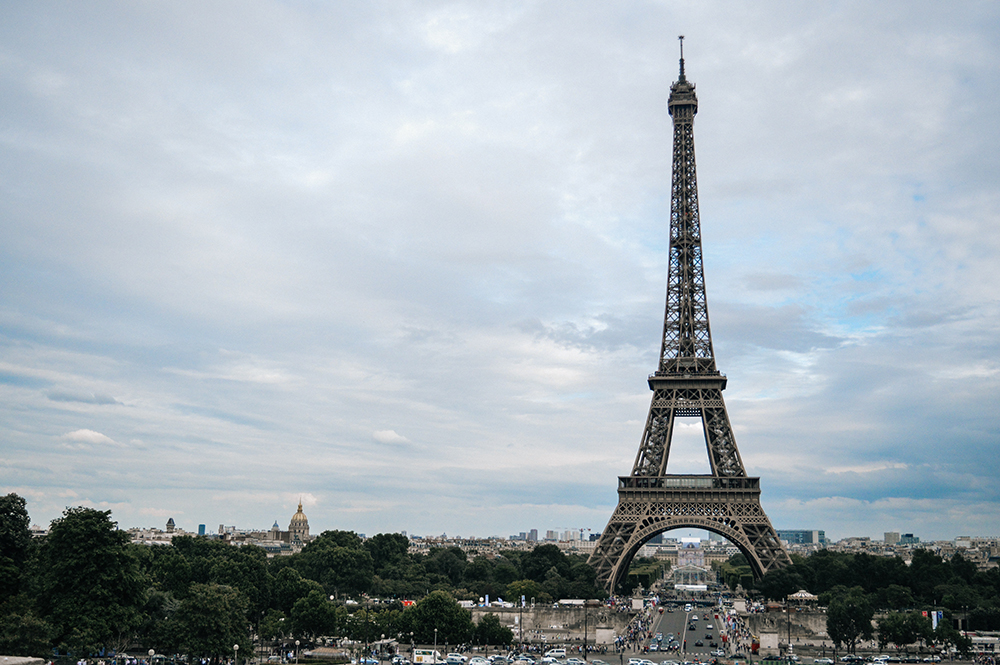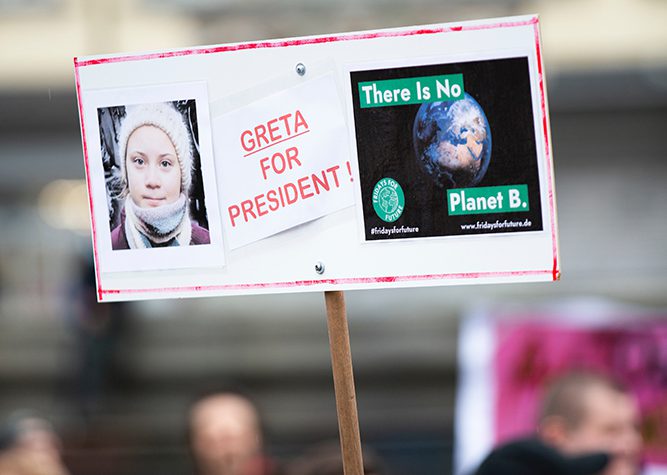
Wellington might be better known for its wind, but on that day in November 2018, three weeks before the big-budget Mulan was to finish filming, Auckland was competing for the title.A gust blew through a multi-levelled “play-gym-like” structure built from bamboo scaffolding, threatening to dramatically untie the long stretches of red fabric fastened to the poles.
The space, which not long ago had atop the exact piece of land a massive water tank for shark movie The Meg, will host a climactic battle scene in Disney’s live-action remake of the legend of a female warrior who saves China against northern invaders.
Unlike the beloved 1998 animated feature, this version of Mulan, directed by Kiwi Niki Caro, will feature no musical ditties or cheeky talking dragons voiced by American comedians. It will hew closer to the folkloric ballad told through centuries in China.
The scaffolding is one of several large-scale, impressive sets by production designer Grant Major that dot the Auckland studio backlot. Perhaps the most eye-popping one is the full-size Hakka-style tulou roundhouse which houses Mulan’s village.
The floor is covered in real stone, but the roof shingles are made of foam. Bird cages and dried bushes hang from bamboo sticks.
The structure which took more than four months to build, is more than steady enough for a pack of journalists to climb up and down and wander around, but, thanks to the ephemeral nature of movie sets, will be torn down when filming ends.
The level of tactile detail on each set is incredible, such as the already burnt wicks on the candles that decorate the gold throne room – larger than any real throne room you’ve set foot in across Asia on the many palace tours you feel obliged to take in the name of culture.
Of course, now those intricate details won’t be seen on the big cinema screen in Australia as originally intended – though you could pause each frame at home and take it all in.
When this version of Mulan was greenlit in 2015, Disney could not have anticipated the storm the movie now finds itself engulfed in.
The pandemic aborted its original release plans in March this year. Two attempted reschedules finally turned into an entirely different plan – a release on streaming service Disney+, with a price tag of $34.99.
That was a first for Disney, as was releasing a $US200 million made-for-cinemas blockbuster straight to streaming (in markets where Disney+ is available).
RELATED: Donnie Yen wanted to sing a musical version of Mulan
And then there are the political challenges Mulan now face, being released in a year in which anti-China sentiment has soared through a combination of the Wuhan-originated pandemic, trade wars and the actions of China’s government against democratic Hong Kong and the Uighur people.
More specifically, Mulan’s photogenic Chinese star Yifei Liu, who could’ve been enjoying the Western attention someone like Zhang Ziyi was afforded after Crouching Tiger, Hidden Dragon, has instead sparked a boycott movement after she made comments supporting Hong Kong police against democracy protesters.
Mulan’s big budget was never a sure bet, but it’s more of a gamble now than it was a few years ago.
It’s definitely not a scenario producer Jason Reed could’ve predicted during production in 2018 when he said Mulan is to be a “love letter to China”.
At the time, Reed talked about the care taken to ensure Mulan would be culturally respectful which included recruiting producer Bill Kong, hiring cultural, military, historical and literary consultants and casting an ensemble of actors with Chinese backgrounds, especially after the mixed casting of the 1998 version.
“When the original movie was made, that world is a little different and there was some ethically mismatched casting that happened,” Reed said. “We feel like the world’s moved to a new place in terms of representation and it was very important of us to make sure that we’re conscious of that, in all elements of casting.”
That dedication to casting actors from Asian backgrounds is evident in the enormous costume warehouse, where their reference headshots are pasted on the wall near the three clocks set to Los Angeles, New Zealand and China time. The sight of so many photos of Asian actors on a big-budget Hollywood set is unprecedented.
Liu’s casting came about after a search in, according to Reed, “25 or 30” countries. She has a notable profile in China and Mulan was set to be her most prominent global role. With a martial arts background, she was able to perform most of the stunts herself and trained for months in the lead-up for fight and riding sequences.
Reed said of Liu, “It was really important to us, given that Mulan is so much bigger in China, and we live in a globally connected world, that it was important for us to find someone who embodied the ‘Chinese-ness’ of the role.
“When it finally came down to who had the acting ability, the physicality, the soulfulness and fierceness to play this role, when we found Yifei, there was no choice. We just had to cast her. We actually moved the start date of the movie in order to accommodate her.”
Throughout the day on set in Auckland, almost everyone, from costume designers to fellow cast members, spoke of Liu’s strength with admiration and reverence.
When she appeared later that day, her small frame and softly spoken, unimposing presence belied the physical strength she would show on screen.
She didn’t give a lot away when asked about whether she’s ready for the global recognition that comes from headlining a Disney movie.
“I don’t try to think about it when I’m acting because the real present for me is you know when you’ve done a good job,” she said. “If people like you, that’s good but the most important thing is how you feel.”
Liu gave a similarly guarded response in February when she told The Hollywood Reporter she’s trying to not think about the response to her controversial social media posts about Hong Kong – “It would really be a loss for me if I let the pressure overtake my possibilities”.
Still, there’s no denying Liu has become a bit of a marketing problem for Disney in the West – the movie will release theatrically in a week in China where there is no Disney+.
The first sign of trouble was a week after her comments, when Liu was absent from D23, the Disney star extravaganza during which famous faces from its upcoming projects were all rolled out for red carpets, presentations and panels. Director Caro did the Mulan presentation solo.
Still, to focus solely on Liu, no matter your opinion on her stance, would be a discredit to the 810 crew members, ensemble cast that also includes Gong Li, Jet Li, Donnie Yen, Yoson An and Jason Scott Lee, and 2600 extras who worked on Mulan in New Zealand and in China.
An is a Macau-born New Zealand actor (and spent two years in Australia as a child) who plays Honghui, the closest character resembling a love interest for Mulan. His role is one-half of the Li Shang character from the 1998 animation, which has been split into two, the other Yen’s Commander Tung.
The decision was based on understanding it wasn’t the best choice to have the love interest and a commanding officer as the same person.
An, who has a background in karate, jiu jitsu and MMA, views it as a blessing and a curse to not have an animated equivalent.
“It’s a blessing because I get to revamp and come up with something new with Niki, so that’s been really fun,” Reed said. “But some of the other cast members whose characters were in the animated movie, they have the luxury of going back and draw inspiration from that.”
An, who Australian audiences might recognise as the co-lead opposite Rachel Griffiths in SBS drama Dead Lucky, hopes Mulan will be the next movies to build momentum for Asian stories in Hollywood productions.
“We went out to support Crazy Rich Asians, the first week it was out, the full cast of Mulan went to support the film,” he said. “It was amazing what the film has done to establish itself as the first full cast of Asians in a Hollywood film for 25 years, and the momentum it has created is phenomenal.
“We definitely feel that Mulan is going to take that momentum and go even further, to do for the Asian community what Black Panther has done for the African community.”
Hawaiian actor Lee (Dragon: The Bruce Lee Story) may play the movie’s villain, Bori Khan, the leader of the invading forces, but like any actor worth their salt, he created a backstory in which Bori is the hero in his own eyes.
“You can’t approach the bad guy feeling you’re the bad guy,” Lee said. “For Bori Khan, he feels that he has a mission and his ideas and culture is very different from the emperor’s.
“The backstory I’ve created for him is that the Chinese culture is somewhat trying to impose their ways upon our culture and diminishing our culture. So, it’s very relevant in a way to modern times how certain governments go into other countries and try to rectify the situation with force.”
If Lee is specifically referencing any particular modern government, he’s keeping mum – but there is the chance that some audiences may walk out of Mulan feeling more resonance with Bori’s Rouran warriors than they do with the titular hero in the current political climate.
A movie is rarely just a movie – even one that’s designed to be family friendly and empowering to young women.
“I think on a universal level, Mulan should make people feel proud, excited and inspired, but it definitely speaks to women,” Reed said. “I think it’s an important and inspirational story about a woman finding her place in the world, where it’s not always expected or accepted.”
That was the goal in 2018, but 2020 has thrown a lot of other unpredictable elements into the volatile mix.
Whether Mulan will be success may never be known, if Disney chooses not to disclose the rental numbers, which it doesn’t have to do. And what would even qualify it as a “success” in this unforged path?
Back in Auckland that day, addressing whether there was immense pressure on Mulan, Reed said, very earnestly, “There’s an overall pressure that it has to do well, but you never know what the world is going to look like in 2020.”
Words that would take on a prophetic tinge in hindsight.
Mulan is available for premium video-on-demand for $34.99 on Disney+ from Friday, September 4
Share your movies and TV obsessions | @wenleima
The writer travelled to Auckland as a guest of Disney





More Stories
After a cluster of new COVID-19 cases among the White House staff and a campaign offical, the election night watch party in the White House has become another symbol of U.S. President Donald Trump’s cavalier attitude toward a virus that is ripping across the …
Rob Lucas says the SA economy is forecast to go backwards by 0.75pc in 2020-21, a better outcome than a national economy forecast to shrink 1.5pc.
Labor and crossbench senators want changes to JobMaker, arguing too many workers will be excluded from the hiring credit scheme.